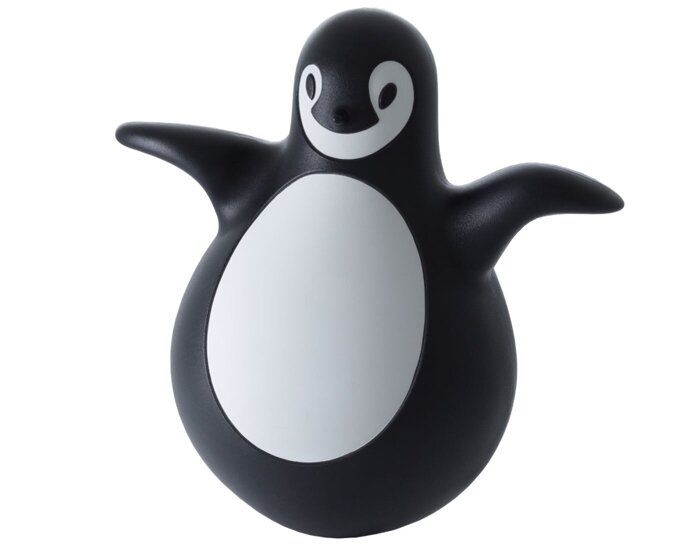Pingy
by Eero Aarnio from Magis - sale
pingy
Design Eero Aarnio, 2011
Rotational-molded polyethylene
Made in Italy by Magis
"... As a young boy I made my first penguin out of paper pulp (papier-mâché) and when it was dry I painted it black and white. For years this 20 cm high penguin lived on top of the cupboard in my childhood home. Unfortunately my apartment was destroyed in the 40's during the bombing of Helsinki and the penguin was lost in the mayhem of war. Now thanks to Magis I have again my penguin chick. The shape of the head and the profile with the cute beak have the right proportions and the eyes have the realistic almond shape characteristic to penguin chicks. This little penguin has perhaps had a little too much to eat and therefore has the round belly, but this particular rotund shape allows it to mimic the realistic waddling movement, which makes it so lovable and cute." - eero arnio
Pingy the penguin is made from rotational-molded polyethylene and features a black body with details painted white.
27.5" h | 26.4" w | 15.75" d
Rotational-molded polyethylene
Made in Italy by Magis
"... As a young boy I made my first penguin out of paper pulp (papier-mâché) and when it was dry I painted it black and white. For years this 20 cm high penguin lived on top of the cupboard in my childhood home. Unfortunately my apartment was destroyed in the 40's during the bombing of Helsinki and the penguin was lost in the mayhem of war. Now thanks to Magis I have again my penguin chick. The shape of the head and the profile with the cute beak have the right proportions and the eyes have the realistic almond shape characteristic to penguin chicks. This little penguin has perhaps had a little too much to eat and therefore has the round belly, but this particular rotund shape allows it to mimic the realistic waddling movement, which makes it so lovable and cute." - eero arnio
Pingy the penguin is made from rotational-molded polyethylene and features a black body with details painted white.
27.5" h | 26.4" w | 15.75" d
Eero Aarnio
Finnish designer Eero Aarnio introduced the Ball Chair in 1963. Using mostly plastic and fiberglass, Aarnio’s work implemented simple geometric forms and were popular as set pieces in vintage science fiction films.
Magis believes a design must not only be good, it should also satisfy a criteria of aesthetic functionalism. Magis combines quality production with a design sensibility that preserves the tradition of Italian made craftsmanship.






 write a review now
write a review now
